I hope you have read the first part of my Benguet tour wherein I wrote about the first four municipalities or town of Benguet province. If you haven't read it yet then you may want to go catch up so you don't miss 30% of the tour. That's a big chunk not to miss!
For a quick recap, from my previous post:
Benguet is known as the salad bowl of the Philippines due to its high production of highland vegetables and some fruits. The province is the salad bowl and not just the municipality of La Trinidad as others try to claim so. The province's generally cool climate favors the production of different crops like vegetables, rice, fruits, and some coffee.
Adivay is a local dialect term of the Ibalois in Benguet which means gathering together to have fun. The term is used to name a festival that Benguet celebrates during its foundation anniversary. This year, it celebrated its 122nd foundation anniversary with a theme "People's Festival of Culture, Nature and the Future."
Now let's move on touring the next four towns of Benguet.
Itogon
Itogon is rich in minerals particularly gold. This is why the main livelihood in the locality is mining.
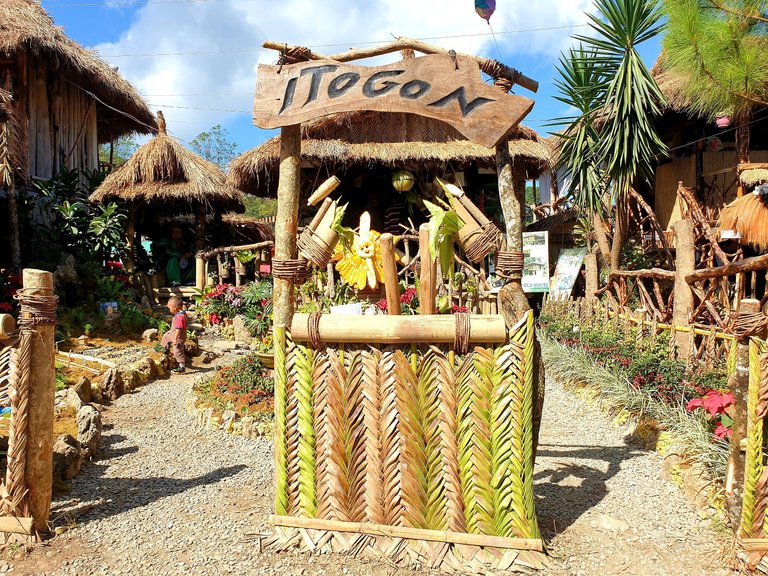
Several mining companies operate in this town like Benguet Corporation, Philex Mining Corporation, Atok Gold Mining Company and Itogon Suyoc Mines.
One very popular mining site in Itogon that I hear too often is Balatoc Mines. It is owned by Benguet Corporation and was opened in 1997 to visitors through guided tour. This gives a simple layman an opportunity to experience mining in a day.
Aside from the company, small-scale miners also operate in the area.

Another spot that makes Itogon famous is the Binga Dam. It is along the Agno River that supplies the Binga Hydroelectric Power Plant. This plant serves as peaking plant or a standby and is used only when a primary plant cannot cater to demands of electricity or if the primary plant is not operational. Simply put, this is a backup plant.
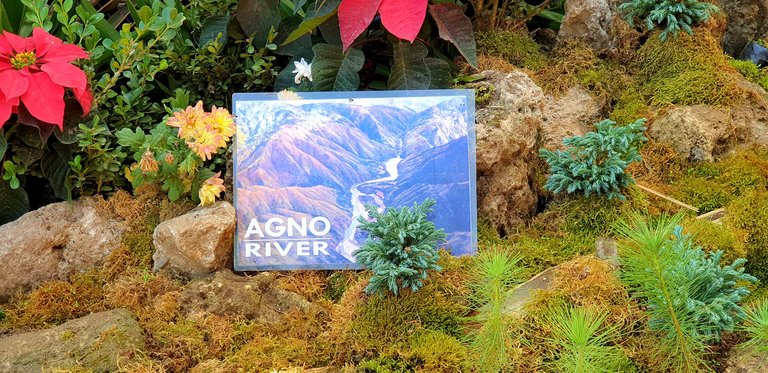
Next to mining is tourism as means of livelihood in some areas of Itogon. This is made possible by the discovery of hot springs that led the locals to build hot spring resorts. There are many hot springs resorts in Itogon and one of the most popular is the 1300 Level swimming pools. I did not get the chance to ask why such name of the business. Maybe I will when I get there.
Leaning on the fence of the landscape was these giant mortar and two pestles with partially pounded rice in the mortar. The giant mortar and pestle are the tools that indigenous people use to pound and remove rice hull pre-rice mill time. We also had like this during my childhood in Zambales. I wonder if I can still pound in perfect rythm with a partner. I used to do it with my mother.
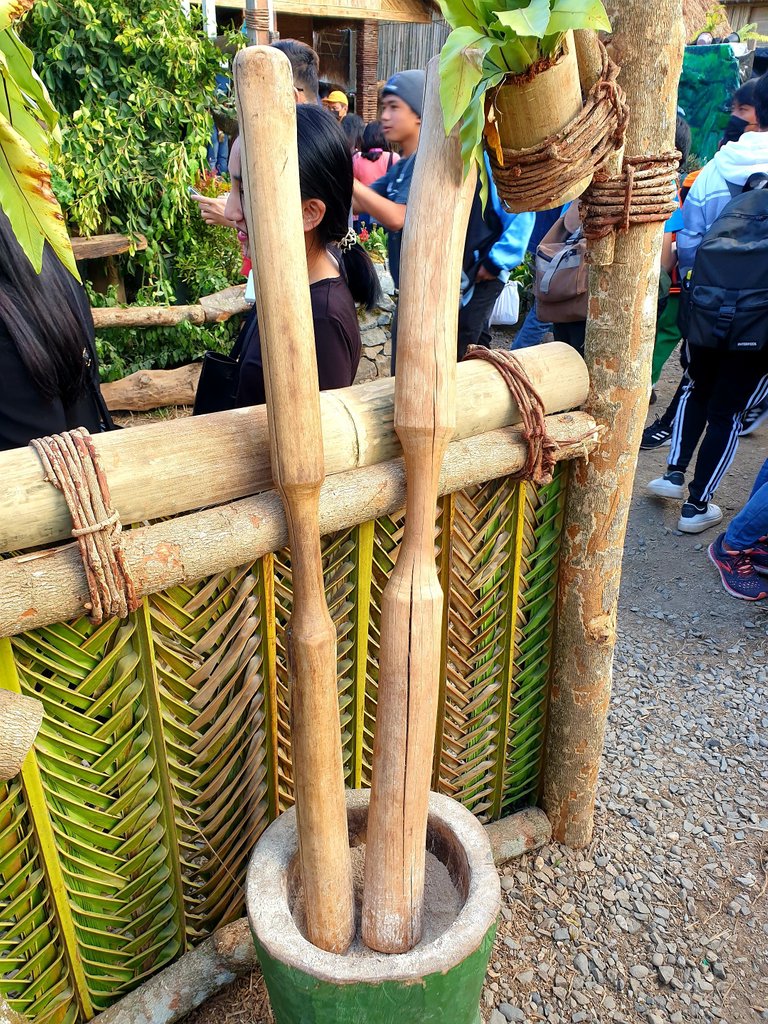

Kabayan
Ruggedly beautiful. This is how the town describe itself on their brochure which I got on my second visit.
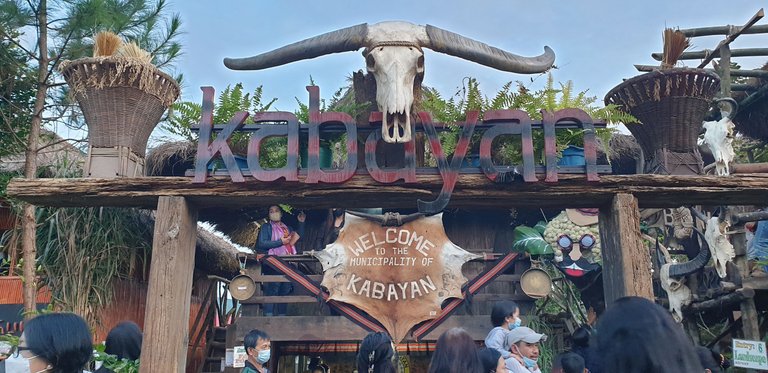
Visitors to the booth were greeted by a wide uniquely cut banner which I did not notice its material at first. On my second visit, I uttered "wow!" looking up at it. I stared at it for a moment and tried to figure out what animal skin it is. Cow's!
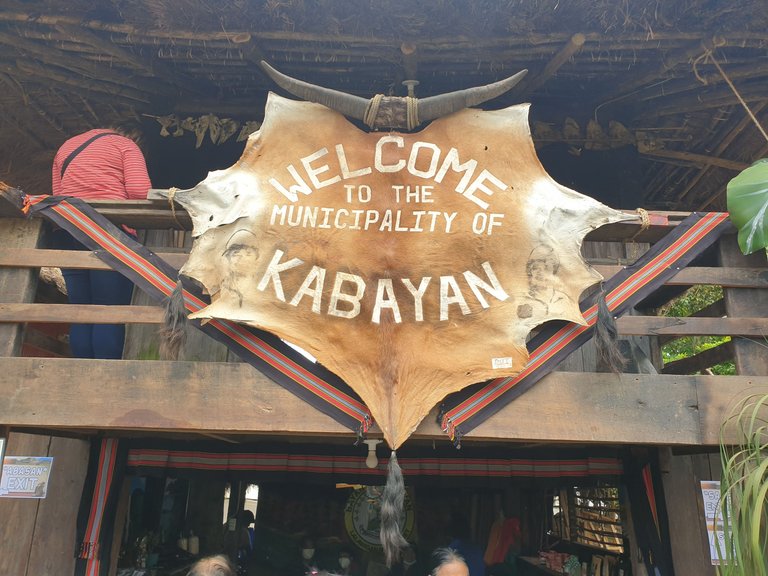
To the sides of the hut are several animal skulls on display. I take them as of carabaos based on their horns.
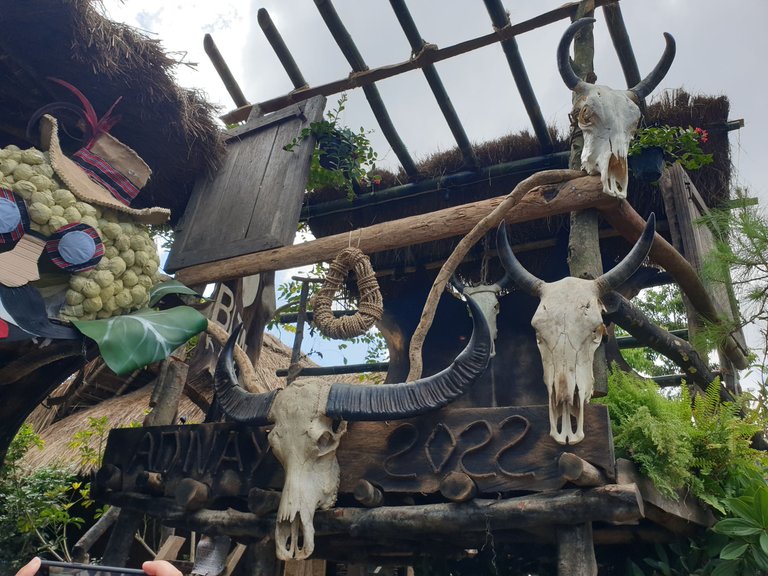
Up inside their hut is another sight of the fireplace in the old days. Like what I wrote about the town of Bakun, the fireplace has a platform above the fire where meat are hang and smoked yo be preserved. Above that is another platform to out rice bundles for drying before pounding or milling.
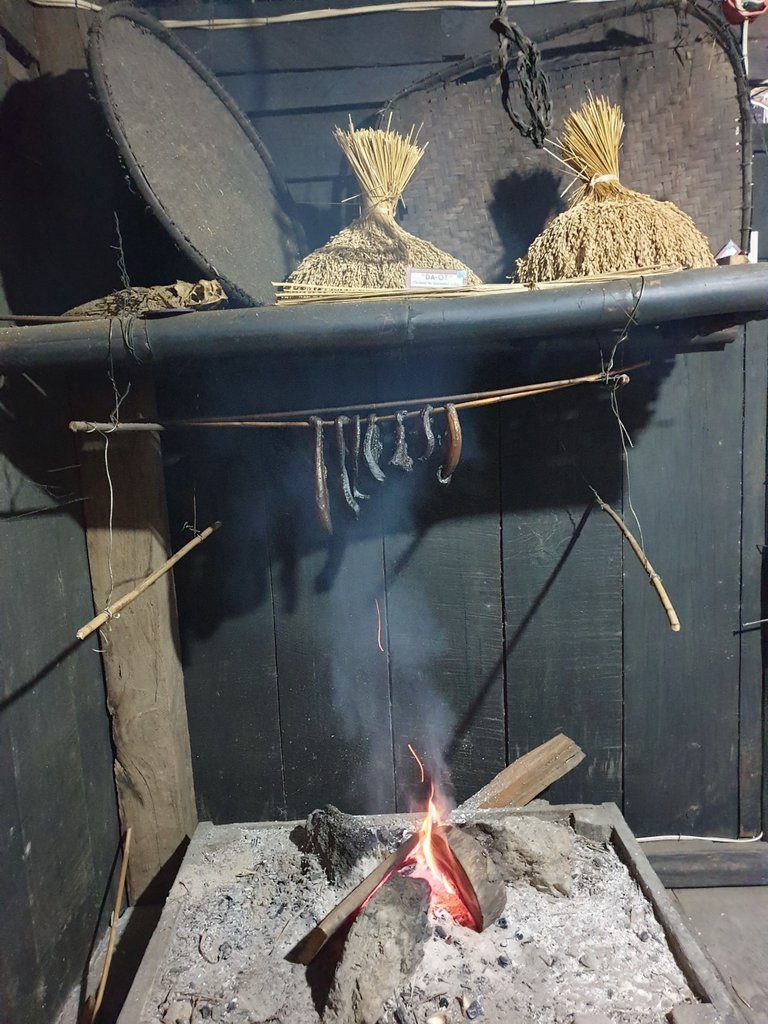
To the left of the fireplace was a wall of woven rattan backpacks. I have these as pasiking but I found out on the displays that there is another variety called kalupi.

I thought the kalupi is the type with structural frame on four sides like posts that hold the body of thr bag. However there was one kalupi that did not have the structures. Now I am not sure about the differences of pasiking and kalupi.
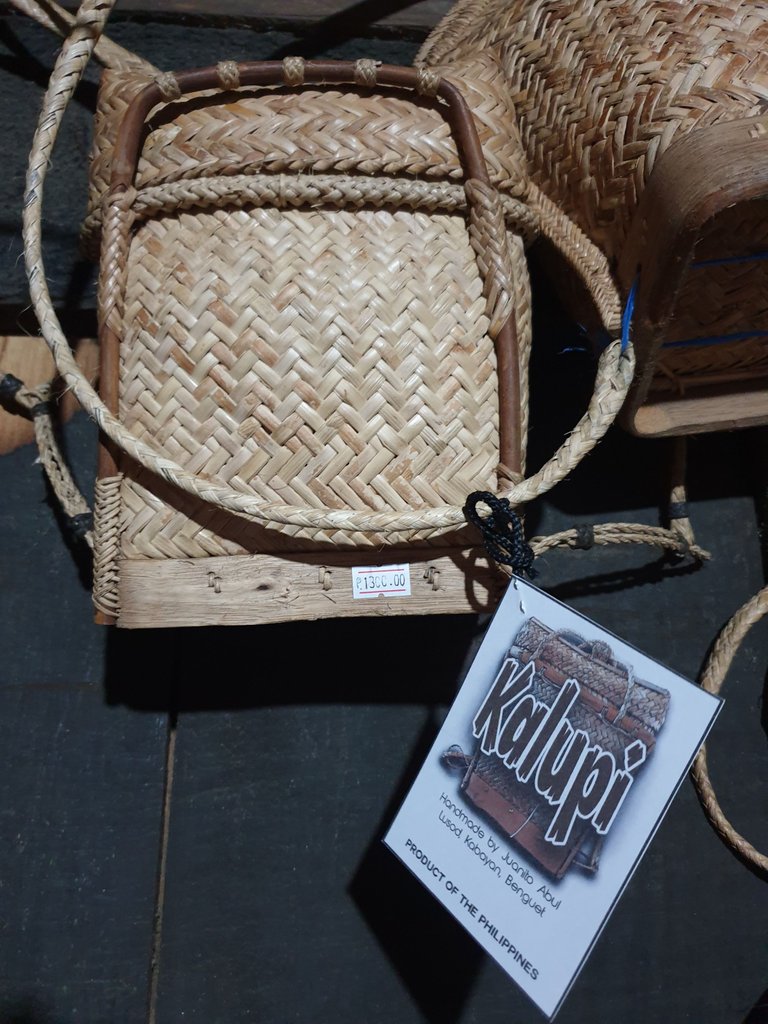
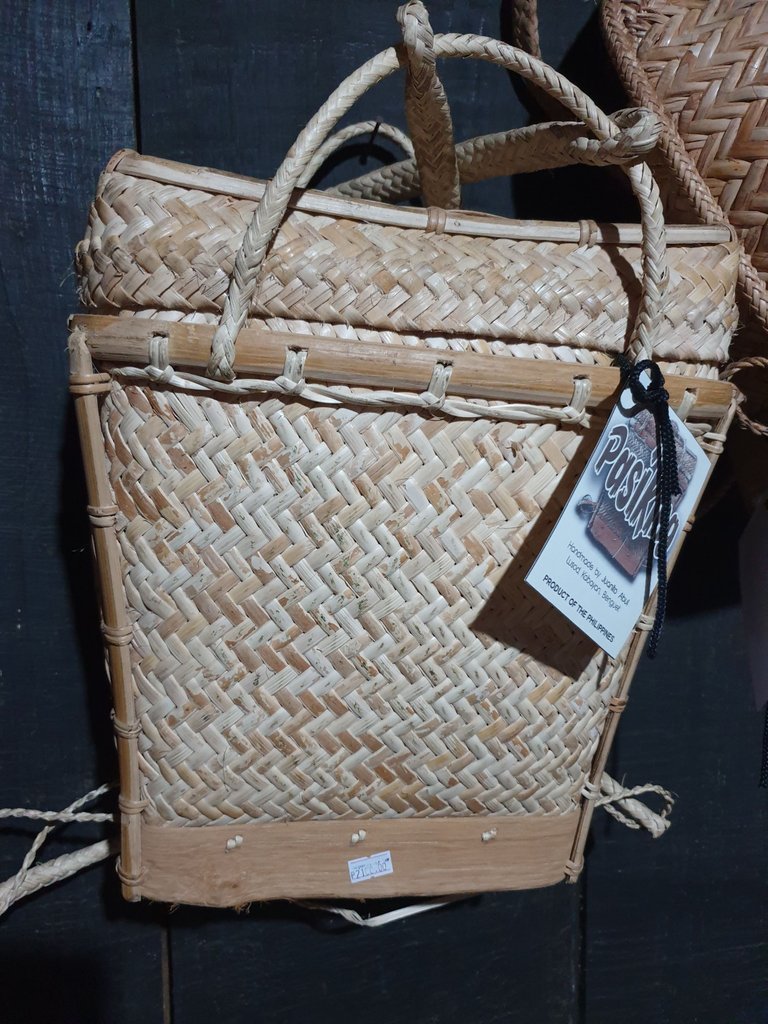
There was also this shoulder bag which I discovered to be called balinggaw.
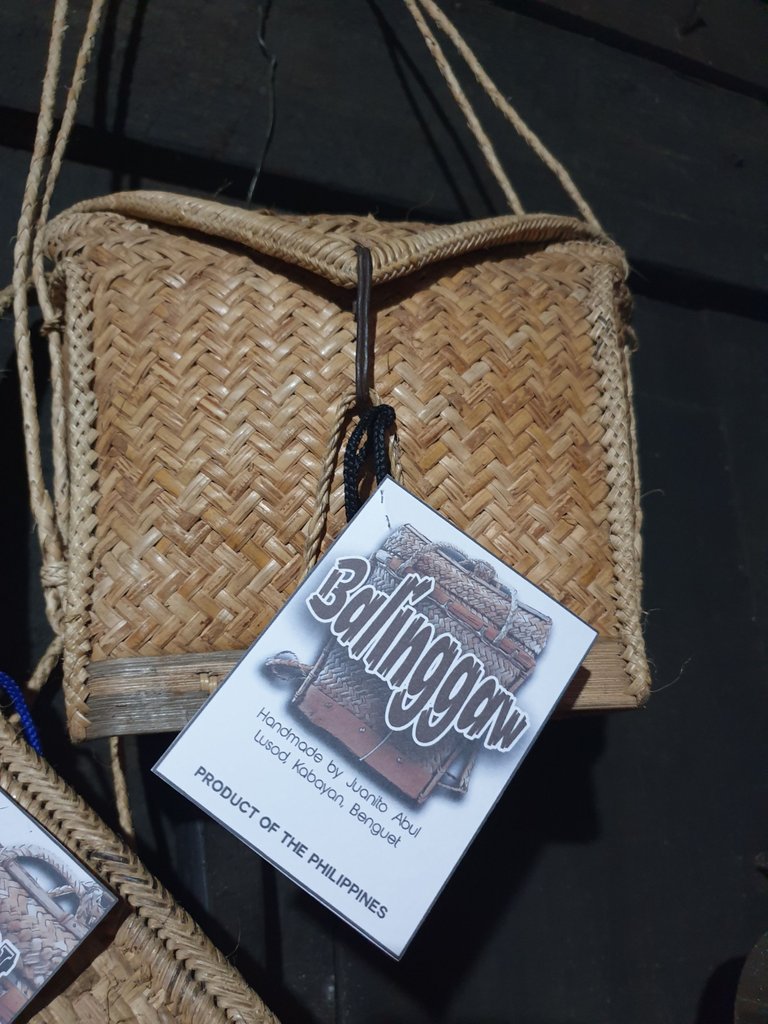
Kabayan is known for being the "home" to Mt. Pulag even if the mountain is in territorial boundary of the town. This is because the trails to Mt. Pulag summit are in Kabayan. As many would know, Mt. Pulag is the highest mountain in Luzon and is open to mountaneers or hikers. While I did not see a Mt. Pulag miniature in the Kabayan landscape, it is the first and biggest item on "what we offer" list in their brochure.
Aside from Mt. Pulag, I found out from their brochure about Kabayan mummies. The mummies are said to be centuries old and they are the well-preserved mummies in the world. These have earned the town the label of "creepiest place on Earth." I quote from their brochure:
The Kabayan Mummy Burial Caves are identified by the National Museum as National Cultural Treasures pursuant to P.D. no. 374. It is also under consideration as a UNESCO World Heritage Site.
The following two photos of mummy and cabe of skulls were taken from their brochure.
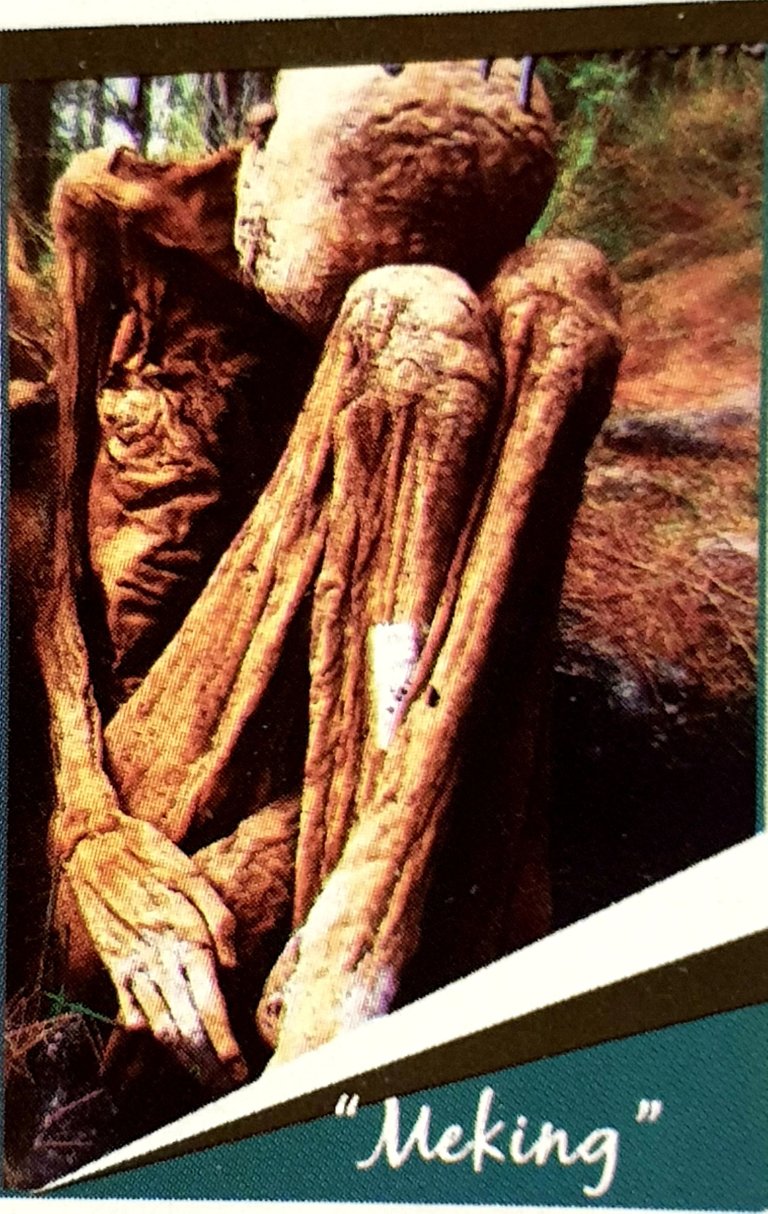
Meking is the Ibaloi term for mummy.
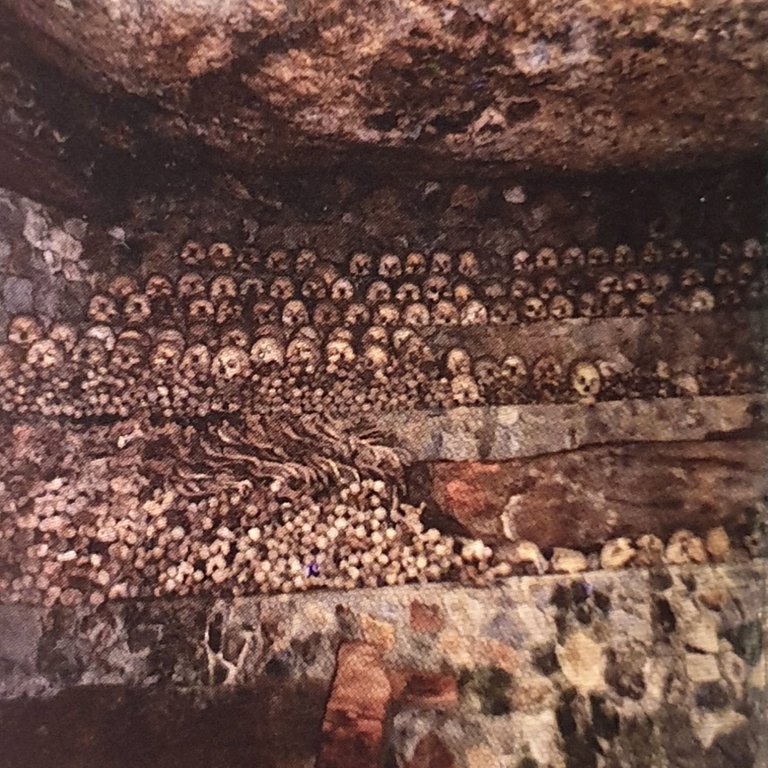
Kapangan
The word kapangan is an Ibaloi term which means "come, let's eat." The town got that as its name because legend has it that when a trader foreign to the land asked the place's name, one of the residents did not understand the trader's language and instead invited him for a meal, "kapangan!" The trader then referred to such place as Kapangan during his frequent visits. The residents did not have a name of their land so they adapted the trader's name for it.
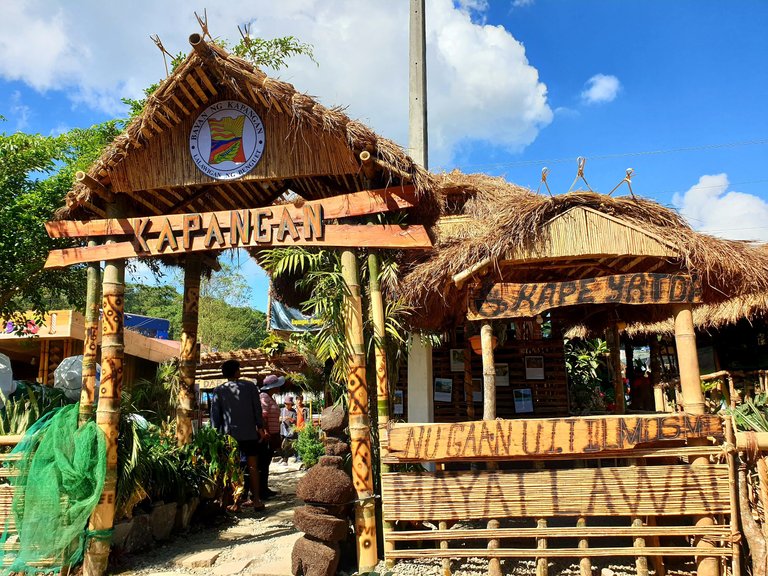
To the right after the entrance of their landscape was a hut that was like a waiting shed. I know itvis called at-ato in Kankana-ey dialect. I am not sure if it is the same with Ibaloi term. The at-ato is a place where townsfolk convene and socialize om a short break. On the side of their at-ato was a wall of wonders. It contains write-ups of their tourist spots.

To the left from the entrance was a miniature dam with the town's hall in the middle. On the sides of the mini-dam are two giant worm figures with labels "silkworm." "Kapangan has silkwom plant?" I asked myself. I went inside their hut store to talk to one of their hosts.
"What do the worms represent? Do you have silkworm plantation in Kapangan?"
"Yes, ma'am. We also have imported cocoons."
"How come I never heard of such industry in Kapangan?"
"It was started in late 90s and featured in 2004. It is just that there was not enough marketing promotion so it is not known to many."
Years ago, I visited a silkwom plantation in Cambodia, from the mullberry farms up to the creation of thread as finished products. I was so amused and amazed to know we have that here in the Philippines.
"So you have a plant to process the cocoons into threads as finish products?"
"No, ma'am. We have the plant here. At the back." He was pointing at the back of the Adivay venue in the town of La Trinidad.
"Okay, so the cocoons are harvested in Kapangan and brought here for processing?"
"Yes, ma'am."
"How about the finished products? Are they marketed locally?"
"No, ma'am. All are exported directly to Japan and Korea."
"Why are we not catering to local market?"
"There is no budget, ma'am. We need help in promoting the product to our own market."
"You mean it is cheaper to just turn the products over to exporters than to distribute locally?"
"Yes, ma'am. The foreigners like our threads very much because of high quality. We usually produce up to 4 kilometers of continous thread, no breaks."
It's funny that I am importing yarns and yet we have good products here. This is the problem with our economy even if we would want to support local products.
I wished them for investors in the near future to help promote their products.
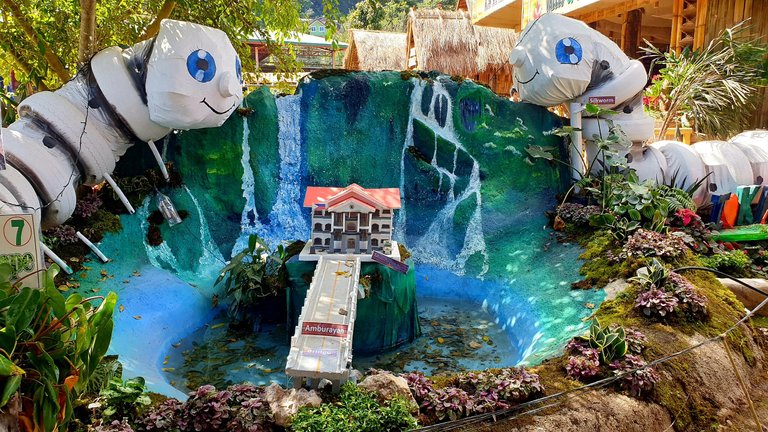
Kibungan
Kibungan's landscape and booth looked like a variety store of agri-crops. There was no one distinguishing mark at first glance.
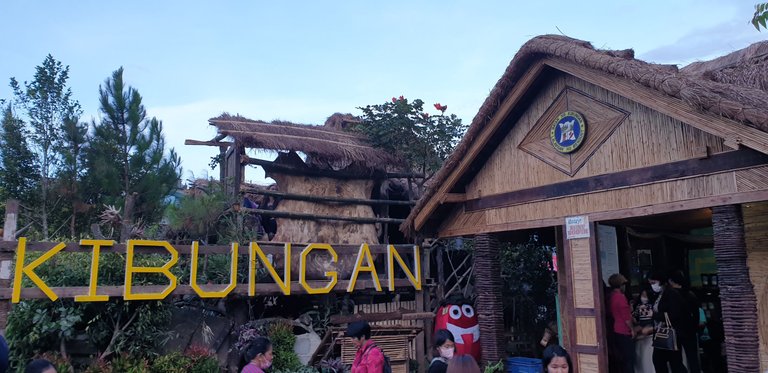
The lawn part of the landscape have different vegetables and pots of strawberries. So this is where La Trinidad's competition is coming from, I thought.
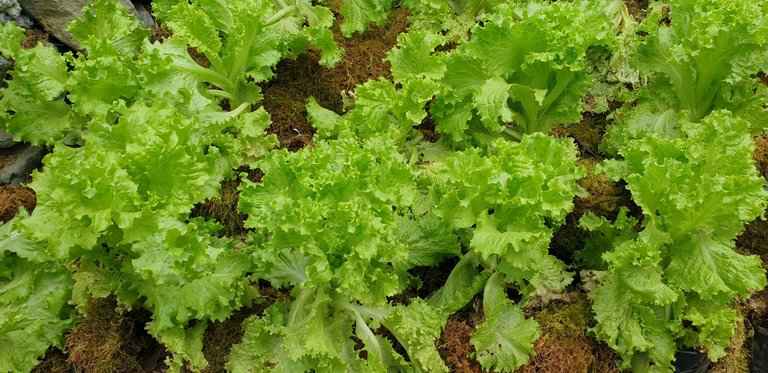

Years ago, production of strawberries mainly came from the town of La Trinidad. In the recent years, the strawberry farmers were saying their sales have gone down due to competition of produce from other towns though in the same province. The first time I heard anout it, I realized that is very much possible because the whole province has cool weather. Kibungan is farther to Baguio City where the market is. Strawberries are sensitive to being moved a lot so the farmers must be transporting the fruits quickly and carefully to avoid those won't get softened and bruised.
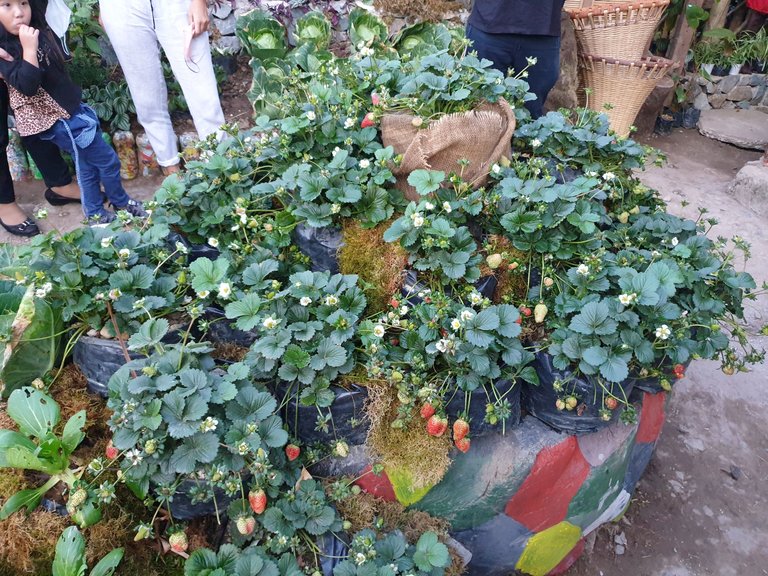
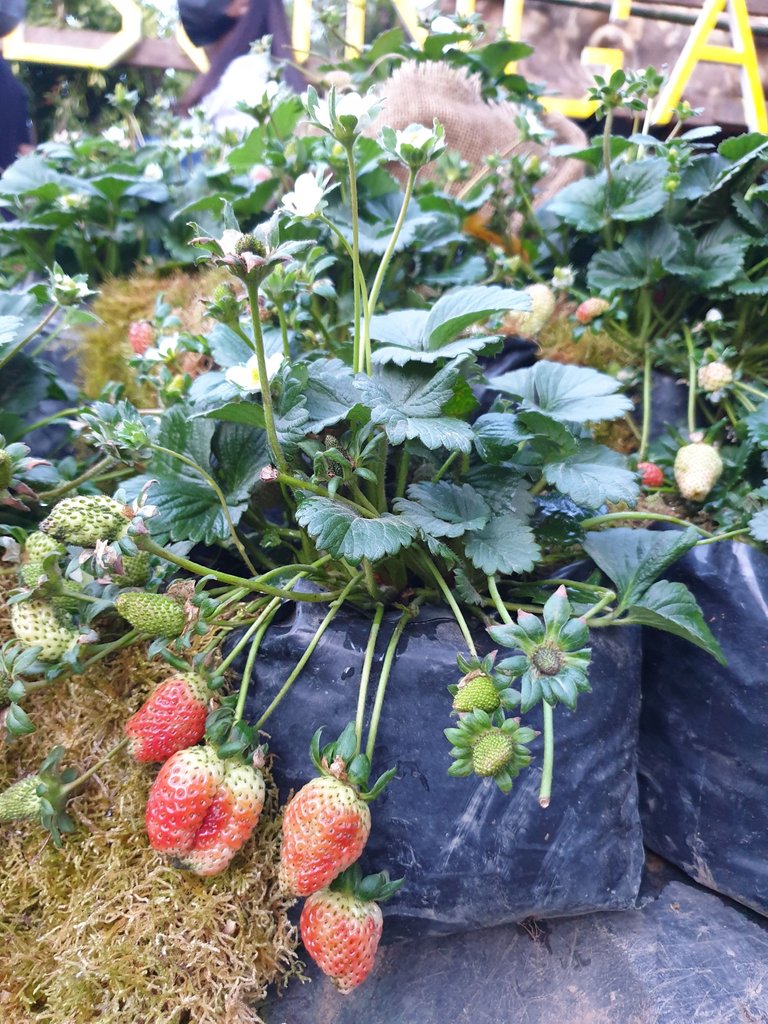
With the variety of products on display, I asked one of the hosts the main product of Kibungan. She said heirloom rice and pointed at the red packed rice on display. I got curious of the how they called they rice so I asked further.
"Heirloom rice?"
"Our native and organic rice. They made the name a little classy," she replied then laughed.
Well, the name speaks for itself. It's an heirloom indeed. It is a very good thing that they keep it growing and going so we do not lose our original ones.
On the packing were different varieties of the heirloom rice: Lasbakan, Kabal, Lablabi anf Bongkitan. I heard about Bongkitan as it is the only variety I see in the markets. I wondered how good the other varieties are.
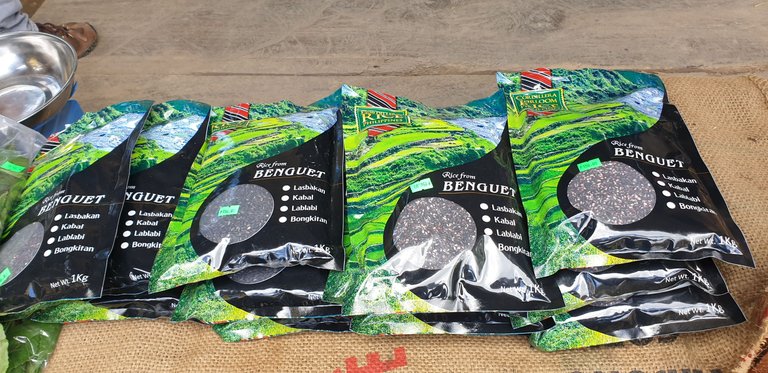
On the side of the hut was a display of rice in bundles for sale. I kind of smiled at the thought of it. Who would buy unprocessed rice? It wouldn't be a surprise if tourists would buy for souvenir. It is only once in a blue moon that you will see unprocessed rice in the market. 😊
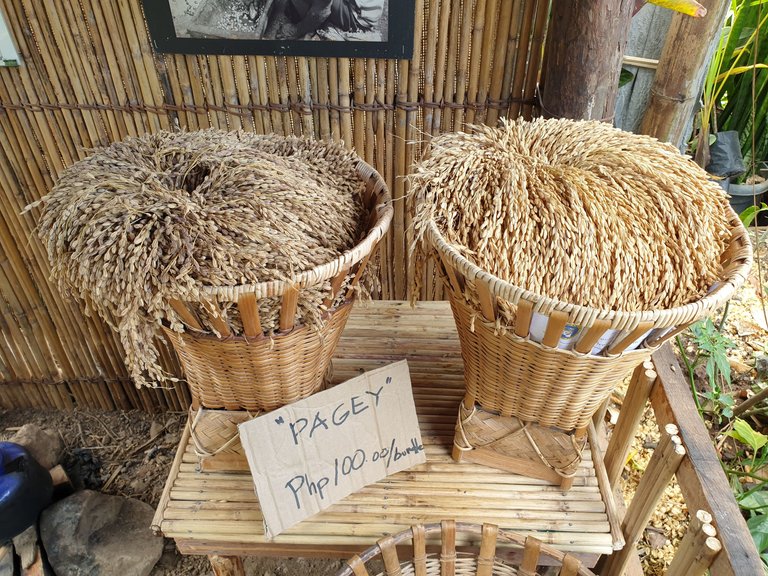
Okay...tha's it for touring the second batch of towns of Benguet province. We have five more towns to go. Please stay tuned and come touring with me again when I write about the remaining towns.
This is a great trait as the Adivay was celebrated within the salad bowl of the Philippines which is La Trinidad!